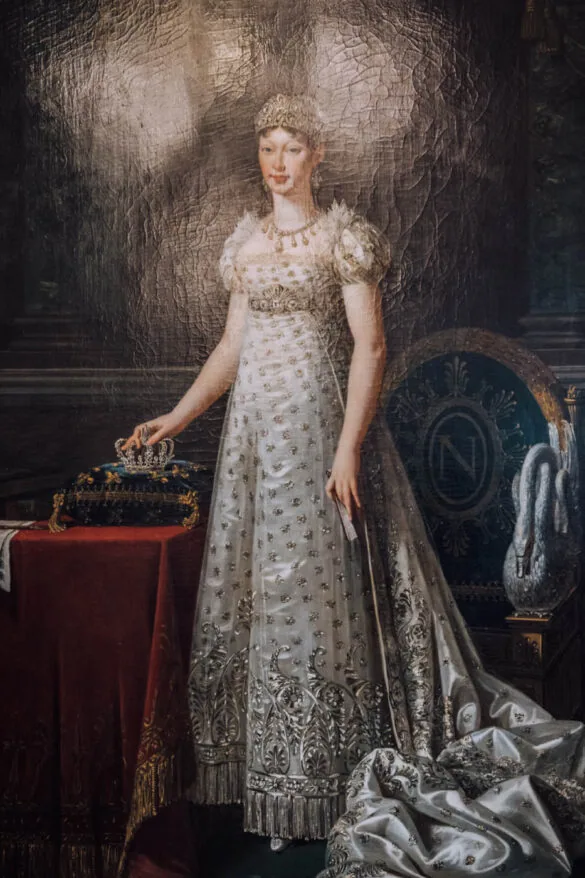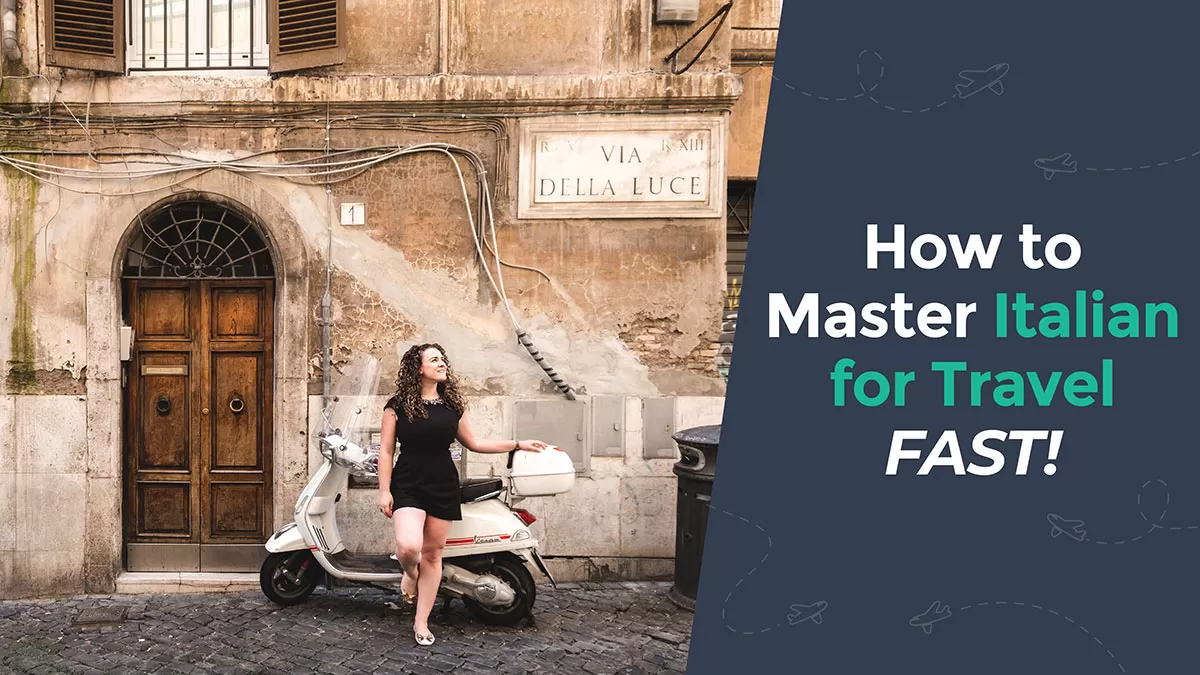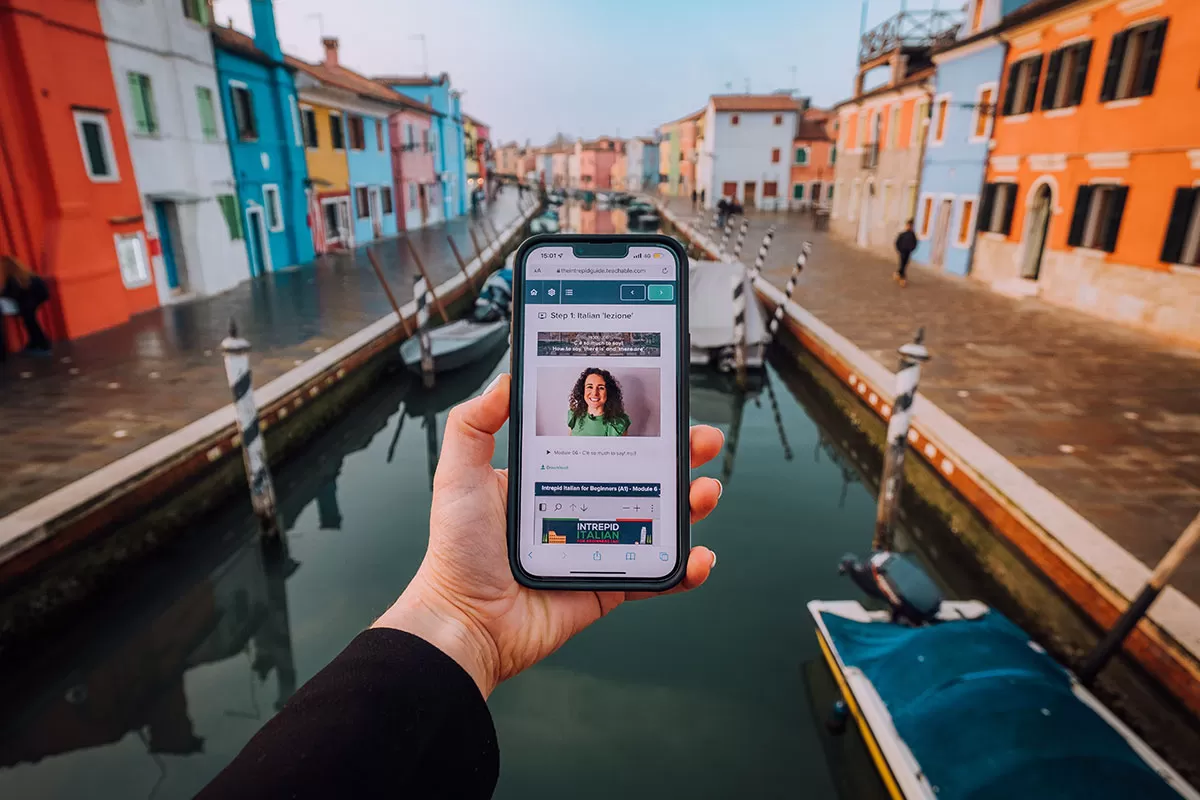Looking for an authentic Italian culinary adventure? This Emilia Romagna food tour offers an exclusive experience that will take you from Bologna to Modena, Parma to Spilamberto.
Emilia Romagna is the gastronomic paradise of Italy and an absolute must-visit for Italian food and wine enthusiasts! With Bologna as the region’s capital, this is the best jumping-off point to enjoy a wide range of regional delicacies.
But, instead of following the mob and getting lost down TripAdvisor review rabbits holes trying to find the best places to eat, I recommend joining this private multi-day food tour of Bologna and Emilia Romagna where everything is thoughtfully curated and taken care of by Giulia, a passionate and knowledgeable local guide.
Not only will you get to experience private tortellini cooking classes, exclusive food tastings, hilltop lunches and wine tastings but you’ll go behind the scenes at local factories not otherwise open to the general public. This includes visiting a prosciutto producer to learn their ancient techniques, see how the “King of Cheeses” Parmigiano-Reggiano is made at a little dairy (Italian: caseificio) and cheese factory where everything is done by hand, and take a private tour of an acetaia (vinegar cellar) and see how Modena balsamic vinegar is made and where you’ll learn how to identify top quality aceto balsamico. Emilia Romagna is where culinary dreams come true!

Pairing knowledge with exclusive food experiences, you’ll taste, learn, and see how many of the internationally iconic Italian foods you know and love are produced according to centuries-old traditional recipes using locally sourced ingredients. There’s nothing quite like it.
I spent five days and four nights on this Emilia Romagna food tour with Untold Italy Tours who specialises in slow travel and connecting with locals. We were granted special access to passionate local producers and restaurateurs who invited us into their world to share their knowledge and stories with our small group of 8 people.
No need for headphones or jostling to the front of the group to hear what the guide has to say. Travelling with Untold Italy Tours is like travelling with your closest friends and favourite family members.
Find out more about the Beyond Bologna tour
Don’t miss my guide on what to eat in Emilia Romagna
Map of food produced in Emilia Romagna

4-Night Emilia Romagna Foodie Tour Itinerary
 Prepare your taste buds for a sensational journey through Emilia Romagna’s culinary wonders. Each day you’re introduced to something new. You’ll indulge in heavenly Parmigiano Reggiano cheese, crafted with centuries of expertise. Savor the velvety Prosciutto di Parma, aged to perfection. Delight in the iconic Balsamic Vinegar from Modena, a sublime elixir that transforms any dish into a masterpiece. Embrace the allure of handmade fresh pasta, like the delectable tortellini and tagliatelle. And let’s not forget the crown jewel: authentic, lip-smacking, slow-cooked ragù sauce that accompanies Emilia Romagna’s famous dish, the sumptuous Bolognese lasagna.
Prepare your taste buds for a sensational journey through Emilia Romagna’s culinary wonders. Each day you’re introduced to something new. You’ll indulge in heavenly Parmigiano Reggiano cheese, crafted with centuries of expertise. Savor the velvety Prosciutto di Parma, aged to perfection. Delight in the iconic Balsamic Vinegar from Modena, a sublime elixir that transforms any dish into a masterpiece. Embrace the allure of handmade fresh pasta, like the delectable tortellini and tagliatelle. And let’s not forget the crown jewel: authentic, lip-smacking, slow-cooked ragù sauce that accompanies Emilia Romagna’s famous dish, the sumptuous Bolognese lasagna.
Here’s what you can expect on this Beyond Bologna food tour.
Day 1 – La Dotta, La Grassa, e La Rossa

Starting in the terracotta-hued capital, the enchanting city of Bologna is known as la dotta (the learned), la grassa (the fat), and la rossa (the red). Home to Europe’s oldest university which was established in 1088, our food tour starts off with a bang as we stroll through its medieval streets and UNESCO-protected porticoes.
Our group of eight is led by Giulia, our delightful host who hands the reins over to Stella, a local Bolognese tour guide, who shows us around Bologna as part of a three-hour Bologna food tour.
History lessons are punctuated with various food tastings. Our first is in an osteria (inn or tavern) where we sit down for a spread of cured meats including mortadella (sometimes called Bologna), salame rosa, and prosciutto di Parma which we eat with crescenta, a delicious focaccia type bread that’s cut into squares. We wash it all down with Pignoletto, a sparkling white wine from the Emilia Romagna region. It’s famous for its crisp, refreshing character that offers vibrant flavors of citrus, apple, and floral notes.


Thoroughly satisfied but excited to try more food, we continue our historical exploration of the city. As we pass by the city’s iconic towers, Stella tells us that the official recipe dictates that the width of tagliatelle should be 1/12,270th of the height of the city’s Asinelli Tower when cooked (or 8mm). This fun fact soon becomes a theme of the tour, where there is a story and reason for doing everything here.

Coincidentally, tagliatelle al ragù (bolognese sauce) is next on the menu! Stopping by a famous local market, we enjoy our first taste of this classic Italian dish consisting of long, ribbon-like pasta served with a rich, slow-cooked meat sauce.

View from above of our accommodation

Later in the afternoon, we’re whisked into the countryside to our home at an agriturismo for the next three nights in an agriturismo (farm stay) that’s nestled amidst rolling green Bologna hills and vineyards. Each room is named after a product they produce on-site. I’m staying in the ‘grappa’ room!
Lambrusco spritz before dinner
 In the early evening, we gather together for a Lambrusco wine spritz that teases our taste buds once again ahead of our first 3-course meal together. With wines from the Terre di Castelli region that’s between the plains and the Apennines in the province of Modena, each dish is perfectly paired thanks to the recommendations of our waiter.
In the early evening, we gather together for a Lambrusco wine spritz that teases our taste buds once again ahead of our first 3-course meal together. With wines from the Terre di Castelli region that’s between the plains and the Apennines in the province of Modena, each dish is perfectly paired thanks to the recommendations of our waiter.
Starting with an amuse-bouche and lightly fried gnocco fritto, I opt for the vegetarian ravioli while eyeing off some else’s tortellini in brodo (tortellini in broth).
A perfect end to a perfect first day comes when dessert is served. A generous portion of hazelnut gelato is placed in front of me as I watch the waiter drizzle aceto balsamico tradizionale di Modena over it. I swear, once you put Balsamic Vinegar from Modena on your gelato, there’s no going back. It’s heavenly.

Day 2 – Say ‘Cheese’

View from my private terrace
After a blissful sleep in my huge king-size bed, I woke up with the sun as its golden light hit the surrounding valley and rolling vineyards right outside my window. Of all the days on this trip, today is the one I’m most excited about.
When you think of Italy, one iconic product (besides pasta) that surely comes to mind is Parmigiano-Reggiano. Today, we’re going to a Parmigiano-Reggiano cheese factory! Parmigiano-Reggiano is without a doubt my favourite cheese. I put it on everything! Outside of Italy, we call it ‘parmesan cheese’, but as our guide, Guilia reminds us, “it’s not correct, it’s called Parmigiano-Reggiano”.
Not wanting to spoil my appetite for the tastings later on, I have a light breakfast with eggs and freshly made ginger, carrot and celery juice.
Insisting we arrive early so we can see how each Parmigiano-Reggiano wheel is created, Giulia rounds us up into our luxury tour bus. I’m the first to climb aboard, eager to visit this little dairy that was featured on Stanley Tucci’s series Searching for Italy.
As we climb the winding roads that lead up to the caseificio, we head into the fog that hides the valley below. When we arrive at the cheese factory, we put on a flattering blue mesh smock, with matching hair net, and shoe cover before being led into a large room with several large copper vats.

The cheese makers are already busy gathering and transporting large white balls, which is the result of rennet and a whey starter undergoing a natural coagulation process from milk collected the night before. Remarkably, approximately 550 liters of milk are required to create each wheel of Parmigiano Reggiano! From seeing curd forming in the vat to transporting each ball into a mold, marked and then covered with a special lined cloth, we get to watch the whole process.
 Next, we wander around the salting baths and visit the huge aging room that’s filled floor to ceiling with hundreds of thousands of Euros worth of Parmigiano-Reggiano cheese wheels.
Next, we wander around the salting baths and visit the huge aging room that’s filled floor to ceiling with hundreds of thousands of Euros worth of Parmigiano-Reggiano cheese wheels.
We end our visit with an hour-long tasting that includes all other cheeses produced on-site including both soft and hard cheeses. The highlight for me is trying the different stages of aging of Parmigiano-Reggiano from 24 months all the way up to 40 months.
Ciacci, Borlenghi, and Tigelle, Oh my!

Following our dairy adventure, we visit the Chestnut Museum (Italian: Museo del Castagno) for a light lunch and learn about borlenghi, ciacci and tigelle. These three types of bread are prepared using basic ingredients that were originally eaten by less privileged mountain dwellers. After a demonstration, we get to try our hand at making a borlengo, a thin flatbread. It looks easier to make than it is!

Leaving it up to the experts, together we sit down at a long table covered with a red and white checkered cloth choosing from various cured meats and cheeses to pair with each of the three mountain breads. Buon appetito!
 After lunch, we make an unscheduled stop to take a stroll around Sassi di Rocca Malatina. Located in the hills of the Middle Modenese Apennines, the area covers 2,300 hectares and is made up of ancient chestnut groves, woods, and cultivated fields. Its centerpiece is the huge sandstone spires of the Sassi which rise up from the deep valley floor.
After lunch, we make an unscheduled stop to take a stroll around Sassi di Rocca Malatina. Located in the hills of the Middle Modenese Apennines, the area covers 2,300 hectares and is made up of ancient chestnut groves, woods, and cultivated fields. Its centerpiece is the huge sandstone spires of the Sassi which rise up from the deep valley floor.
Under the Emilia Romagna Sun

We head back to the agriturismo where we unwind and recharge for a few hours before heading out for a surprise stop (that I won’t spoil for you). Dinner is served in the quaint town of Castelvetro di Modena. With the sun still shining, we enjoy an aperitivo all’aperto (outside) before heading indoors for a dinner where our bubbly waiter from Calabria recommends various dishes according to our tastes.
I order the tagliatelle ai funghi (tagliatelle with mushrooms) which is both flavourful and filling. For dessert, we’re spoiled for choice so we order everything on the menu so we can try each one.
Day 3 – From Black Gold to Modena
A private Traditional Balsamic Vinegar tour and tasting in Spilamberto

Our day starts in the picturesque town of Spilamberto. Off the beaten tourist path, this charming commune is where we venture into the world of ‘Black Gold’, that is, Traditional Balsamic Vinegar at the Consortium of Traditional Balsamic Vinegar.
As we’re led into each of the museum’s rooms, we learn about each step of the production process. We learn that the key difference between vinegar and balsamic vinegar lies in the ingredients: vinegar is made from wine, while balsamic vinegar is derived from grape must.
There are three crucial factors that contribute to the production of balsamic vinegar: the quality of the grapes, the composition of the vineyard, and the exceptionally slow process of preparing and transforming the grape must.
To produce traditional balsamic vinegar (Aceto Balsamico Tradizionale) only specific grape varieties are chosen. Trebbiano grapes, along with some Grasparossa or Ancellotta Lambruscos, are highly regarded due to their consistent acid-sugar balance and thickness.

The process begins with the pressing of grapes in vinification vats. Within 24 hours, the grape must is strained and then simmered over a low flame until its volume is reduced by half. Afterward, it is cooled and transferred to small, untreated wooden barrels. These barrels are only filled to 70% of their capacity with grape must.
Over the course of a year, the must is transferred to smaller barrels, repeating this process annually. Each barrel is unique, made from various types of wood and varying in sizes to facilitate the slow acetification process.
Traditionally, the barrels used for the gradual fermentation and concentration of the vinegar are stored in cool attics during winter and endure the intense heat of summer, contributing to the vinegar’s distinctive flavor profile.
 Thanks to Giulia’s brilliant idea of stocking up on some extra Parmigiano-Reggiano from the previous day’s cheese factory visit, our private balsamic tasting at the Consortium is the highlight of my day.
Thanks to Giulia’s brilliant idea of stocking up on some extra Parmigiano-Reggiano from the previous day’s cheese factory visit, our private balsamic tasting at the Consortium is the highlight of my day.
As we enter the tasting room, our eyes are immediately drawn to the large frame on the wall. Inside is the double-breasted coat of Chef Massimo Bottura, complete with balsamic vinegar stains. Originally from Modena, Massimo Bottura is a famous Italian restaurateur and the chef patron of Osteria Francescana, a three-Michelin-star restaurant in Modena that’s been ranked No.1 on The World’s 50 Best Restaurants list twice and currently part of the Best of the Best list.
We sample both a 12-year balsamic vinegar and the extravecchio (extra old) which takes a minimum of 24 years to age. Both are deliciously decadent and smooth.

Massimo Bottura’s chef coat
An afternoon exploring Modena

After picking up a bottle to take home, we’re off to Modena for the afternoon. Here we embark on a captivating city tour with Loredana. She takes us to see the Luciano Pavarotti Opera House, named after Pavarotti who performed here in front of his home audience, and where a bronze statue commemorates him.

Palazzo Ducale
From here we head to the beautiful Baroque Ducal Palace of Modena. From 1452 to 1859, it served as the official residence for the esteemed Este Dukes of Modena. Today, it’s home to the prestigious Italian Military Academy.
Passing through Piazza Grande, we see the Modena Cathedral (Duomo di Modena), a UNESCO World Heritage site, and the iconic medieval Ghirlandina Tower. Renowned for its elegant design and height, it offers panoramic views of the city.

Our tour culminates with lunch at the city’s oldest indoor market located in the heart of the city. We welcome the shade from the warm afternoon sun and sit down to a market fresh lunch. Not wanting to spoil my appetite for tonight’s workshop, I order a crisp salad with apples, walnuts, and raisins, and nibbled on an assortment of fried vegetables.

Private Tortellini pasta-making workshop

Before the evening descends, we set out to a magnificent agriturismo and acetaia (balsamic vinegar producer) for another gastronomic adventure. Together, we uncover the secrets of crafting the iconic pasta of this region – tortellini.
After we each wrap ourselves in an apron, we stand in front of our workstations. To guide us through the pasta-making class, we have Anna, who makes every look so easy. She expertly demonstrates how to make the perfect tortelloni and tortellini. Who knew making pasta required so much arm strength? After lots of kneading, giggles, and pin rolling, we finally get to see our pasta take shape as we try to figure out the best portion of stuffing to place inside each pasta square and how to wrap it around our thumb and index finger into the perfect shape.
Legend has it that Tortellini was inspired by the enchanting navel of Venus, the goddess of love and beauty. Aa the tale goes, Venus and Zeus, fatigued from their involvement in a fierce battle between Bologna and Modena, seek refuge in a cozy tavern located on the outskirts of Bologna. After indulging in a satisfying feast, they decide to share a chamber for the night. Intrigued by their presence, the innkeeper discreetly approaches their room, his curiosity piqued, and peeks through the keyhole. However, all he can see is the mesmerizing navel of Venus. This captivating sight bewitches him so profoundly that he rushes to the kitchen where he crafts a pasta inspired by the divine form of Venus’ navel. Thus, was born Tortellini pasta.
Raising a toast to the setting sun, we explore their balsamic vinegar cellar while the chefs pick out the best of our homemade tortellini and tortelloni to cook for dinner.
Just after sunset we sit down and compare our odd-shaped tortellini with those of the on-site expert chefs. While ours are a bit tough, those of the chef are tender and perfectly proportioned.
Day 4 – Prosciutto producer to pretty Parma

Bidding farewell to our countryside agriturismo, we begin our day at Castello di Torrechiara where we’re joined by local guide, Giacomo who leads us up to the castle via a windy green pathway.
Giacomo explains that this 15th-century castle was built by Pier Maria Rossi, a nobleman who was deeply in love with his mistress, Bianca Pellegrini. Perched atop a hill, the castle offers breathtaking panoramic views of the picturesque countryside and remains a testament to Pier’s and Bianca’s enduring romance.

Prosciutto is ham’azing!

From here we head up into the hills to visit a local parma ham producer. As we enter the factory to see the production line, Giacomo points out to the large open windows, explaining that the fresh mountain air is a key ingredient in how prosciutto gains its unique flavour.
Passing vats of salt and exploring huge fridges full of prosciutto at their various stages of aging, we learn that Prosciutto di Parma is made by carefully selecting the finest pork legs. The meat is salted and left to rest, before undergoing a long aging process in special environments. Giacomo explains that this technique gradually develops a distinctive flavor, aroma, and tender texture, resulting in the iconic cured ham we know and love.

The tour culminates in a tasting session of Prosciutto crudo di Parma and other cured meats including Culatta, the most tender part of the boneless thigh.

Lunch in the piazza
 After working up an appetite, we head back towards Castello di Torrechiara and pick a little restaurant in the town centre for lunch. The warm sun bounces off the colourful buildings of green, yellow and orange that line the piazza. Sitting in the shade under thick vines, I order the asparagus lasagne. The delicate flavors of tender asparagus are separated by layers of rich and creamy béchamel sauce, creating a delightful contrast. I savour every bite, not wanting it to end.
After working up an appetite, we head back towards Castello di Torrechiara and pick a little restaurant in the town centre for lunch. The warm sun bounces off the colourful buildings of green, yellow and orange that line the piazza. Sitting in the shade under thick vines, I order the asparagus lasagne. The delicate flavors of tender asparagus are separated by layers of rich and creamy béchamel sauce, creating a delightful contrast. I savour every bite, not wanting it to end.


To pretty Parma


View of Piazza del Duomo from my room
In the afternoon we arrive at our beautiful hotel in Piazza del Duomo. My king-size room has a kitchen, two armchairs, a huge desk, a TV, and two double windows that overlook the thousand-year-old Parma Cathedral and baptistery.

Baptistery in Parma

Ceiling of Baptistery in Parma
With some free time to spare, I go and explore Parma. I visit the Parma Cathedral and baptistery before making a beeline for Palazzo della Pilotta, home to the Teatro Farnese, a remarkable wooden structure and one of the oldest surviving examples of a Renaissance theater. Also here is the Galleria Nazionale di Parma where I want to see La Scapigliata by Leonardo da Vinci.

Teatro Farnese

Inside Parma Cathedral
In the late afternoon, Giacomo joins us again for a guided tour of the historic city centre. His passion and knowledge for his hometown is infectious as he takes us to a local cafe serving a popular pastry filled with ricotta, mortadella and Parmigiano-Reggiano that’s only available at this one location.

We continue exploring the centre until just before sunset when we’re led into an historic 17th century building restored in the 18th century by the Counts Sacco. Wearing an apron and chef’s hat covered in ladybugs, the head chef greets us and explains that everything is made to order. With nothing being pre-prepared, this is the epitome of Slow Food cuisine. For our last dinner together, we start with frittata and porcini mushrooms on a bed of prosciutto crudo di Parma and parmigiana di melanzane (eggplant with Parmigiano cheese) and tortellini for a main. For dessert, I keep things with a serving of shaved pineapple.

Day 5 – Curating our own perfume
With a heavy heart, it’s time to say goodbye to Parma as our Emilia Romagna food tour comes to an end. But before we say goodbye, we have another day full of excitement.

Our Parma walking tour continues…

Palazzo del Governatore Parma

Ancient Roman bridge
After devouring my poached eggs on toast at breakfast, Giacomo comes to collect us for part two of our Parma walking tour. We explore Ghiaia Market, the city’s largest covered market, see an old Roman bridge, and visit Oratorio di San Tiburzio, a small church with a stunning art installation of over 200,000 flowers, which symbolically represents the citizens of Parma.

Giacomo then surprises us with a visit to the Fondazione Museo Glauco Lombardi where we learn about the life of Napoleon’s wife Marie Louise, Duchess of Parma. Interestingly, her coat of arms is part of the logo of luxury brand Acqua di Parma. Its use pays homage to the Duchesses rule and the help she provided in the development of the perfume and glass industry of Parma.
Perfuming making-workshop

Continuing our theme of perfume, we visit Antica Farmacia San Filippo Neri, old pharmacy dating from 1652 which provided free medicines exclusively to the sick and needy of Parma. It’s here we take part in a perfume workshop where we learn how to produce our very own fragrance. After mixing a variety of scents for the perfect aroma, I’m pretty happy with my three citrus-based scents.
For our final meal together and Parma behind us, we head back into the countryside for lunch at a winery with a stunning view of Castello di Torrechiara. As we sip Malvasia wine, we enjoy our final feast together, savouring every last bite.


Beyond Bologna food tour inclusions
 Untold Italy Tours have dedicated themselves to ensuring that its Emilia Romagna tour is designed to give you a wonderful experience and wonderful food. Here’s what’s included.
Untold Italy Tours have dedicated themselves to ensuring that its Emilia Romagna tour is designed to give you a wonderful experience and wonderful food. Here’s what’s included.
- Accommodation: Enjoy 3 nights in a charming luxury 4-star country house and 1 night in an elegant 4-star hotel in Parma.
- Guided Tours: Embark on 4 guided walking tours led by expert local guides.
- Unique Experiences: Immerse yourself in a variety of unique experiences, including a Bologna food tour, a visit to a dairy farm and the Balsamic Vinegar Museum, delightful wine tastings, a hands-on tortellini cooking class, a visit to a castle, prosciutto tasting, and a captivating perfume making workshop.
- Meals: Savor 4 breakfasts, 5 lunches, 1 aperitivo, and 4 dinners with wine and bottled water with every meal.
- Luxury Transportation: Travel in utmost comfort with our luxury air-conditioned transportation, tailored to your needs.
- Tips and Gratuities: Rest assured that tips and gratuities for drivers and guides have been taken care of.
I can tell that Untold Italy Tours has gone to great lengths to curate an inclusive and unforgettable experience that ensures that every aspect of the tour is meticulously arranged and included in the package. They’ve even left room for a couple of surprises too!
Is the Beyond Bologna food tour worth the price?
 I couldn’t think of a better way to explore this region than by joining the Beyond Bologna food tour. The accommodation was beautiful and spacious, each meal was mouth-wateringly delicious, we got to try a wide range of traditional dishes and local produce, go behind the scenes at various locations, and get our hands dirty in two private workshops.
I couldn’t think of a better way to explore this region than by joining the Beyond Bologna food tour. The accommodation was beautiful and spacious, each meal was mouth-wateringly delicious, we got to try a wide range of traditional dishes and local produce, go behind the scenes at various locations, and get our hands dirty in two private workshops.
We were joined by local guides everywhere we went and were transported all over in a comfortable air-conditioned mini-bus by our charismatic driver Jonny. Not only was it excellent value for money, but we had an authentic local experience not otherwise available to the general public.
Check availability and book your Beyond Bologna tour
Untold Italy Tours offers various multi-day experiences to Puglia, Rome, Tuscany, Capri, Western Sicily, Eastern Sicily, Liguria, Piedmont, and Umbria.
Explore all their tours here.
Don’t be treated like a tourist. Learn Italian with my 80/20 method
Travelling to Italy? Don’t be treated like a tourist! Live your best travel experiences and learn Italian for less than the cost of eating at a tourist trap restaurant or a taxi driver who has “taken you for a ride”. I’ve made it easy for you to master the Italian language so you can create lifelong memories as you mingle with locals, get local tips, avoid tourist traps, and make new friends. Who knows, you might even be invited over for afternoon tea by a lovely Sicilian family like I was! Read all about how speaking Italian changed my life and check out my online Italian video course here.
Here’s what my students are saying:

I really enjoyed the Intrepid Italian course, it certainly exceeded my expectations. The learning methodology is great,and easy to follow and found that Iprogressed much faster in the last 4 weeks than I ever did on my own or using other language apps. Grazie mille Michele, I can’t wait until I can put my new skills into action!- Roma Small
Join now and learn anywhere, anytime
Planning a trip and need travel insurance? Get a free quote from World Nomads here.
Don’t miss these guides to Bologna and Emilia Romagna
- What to Eat in Bologna: 15 MUST-Try Traditional Food and Drink in Emilia-Romagna
- What to Do in Bologna in a Day (The PERFECT Bologna Day Trip Itinerary)
- Where to Stay in Bologna: Best Hotels & Apartments By Neighbourhood
- 55 UNIQUE & BEST Things to Do in Bologna, Italy + Top Tours
- 31 BEST Things to do in Parma, Italy
- 15 BEST Hotels in Parma, Italy // Where to Stay in Parma for Every Budget
Like it? Pin it for later!

Over to you!
Did you enjoy this guide? Let me know using the comments section below or join me on social media to start a conversation.
Thanks for reading and I hope you enjoyed this post.
Like what you see? Subscribe using the form below to have all of my posts delivered directly to your email.







































































